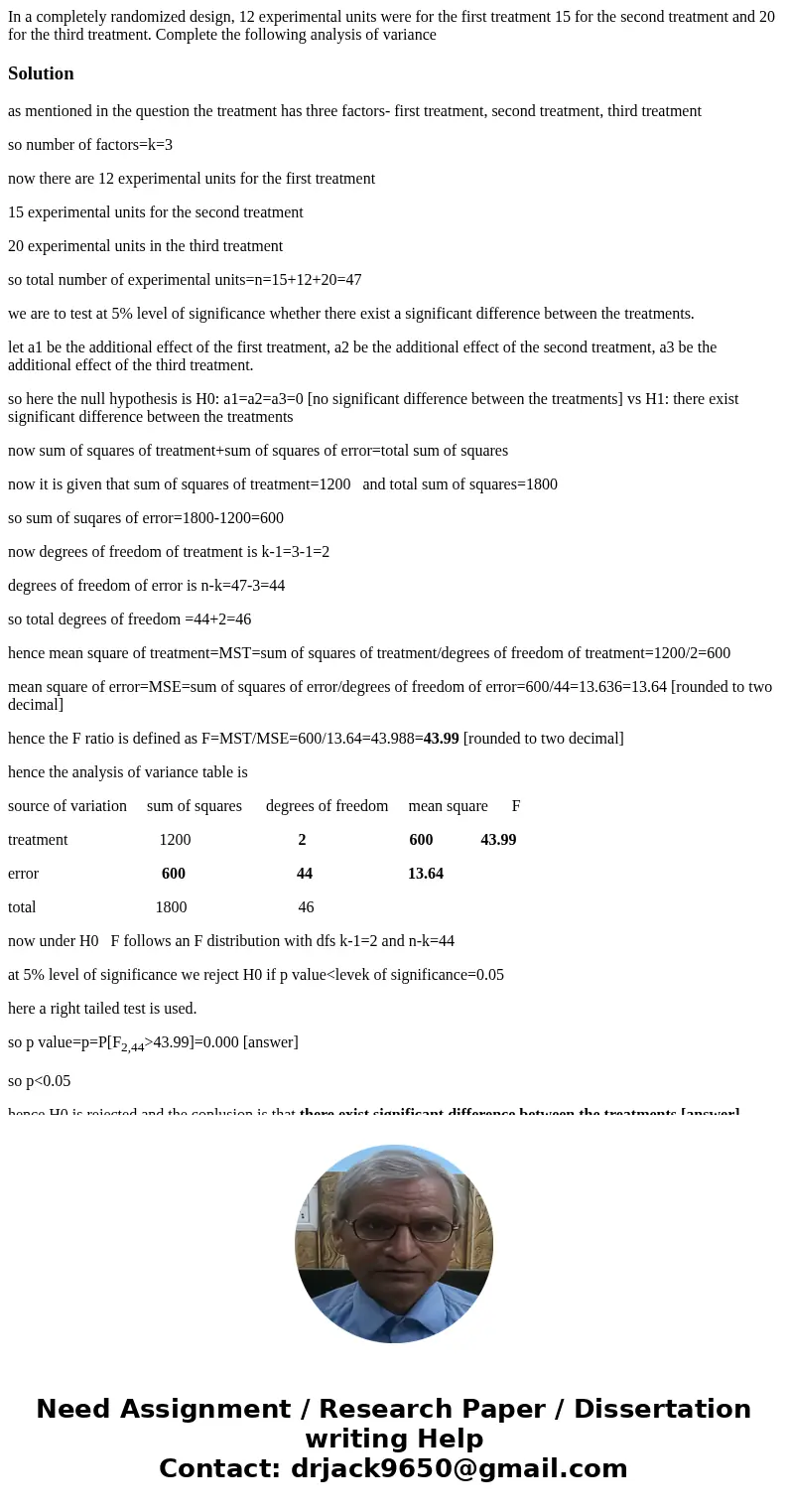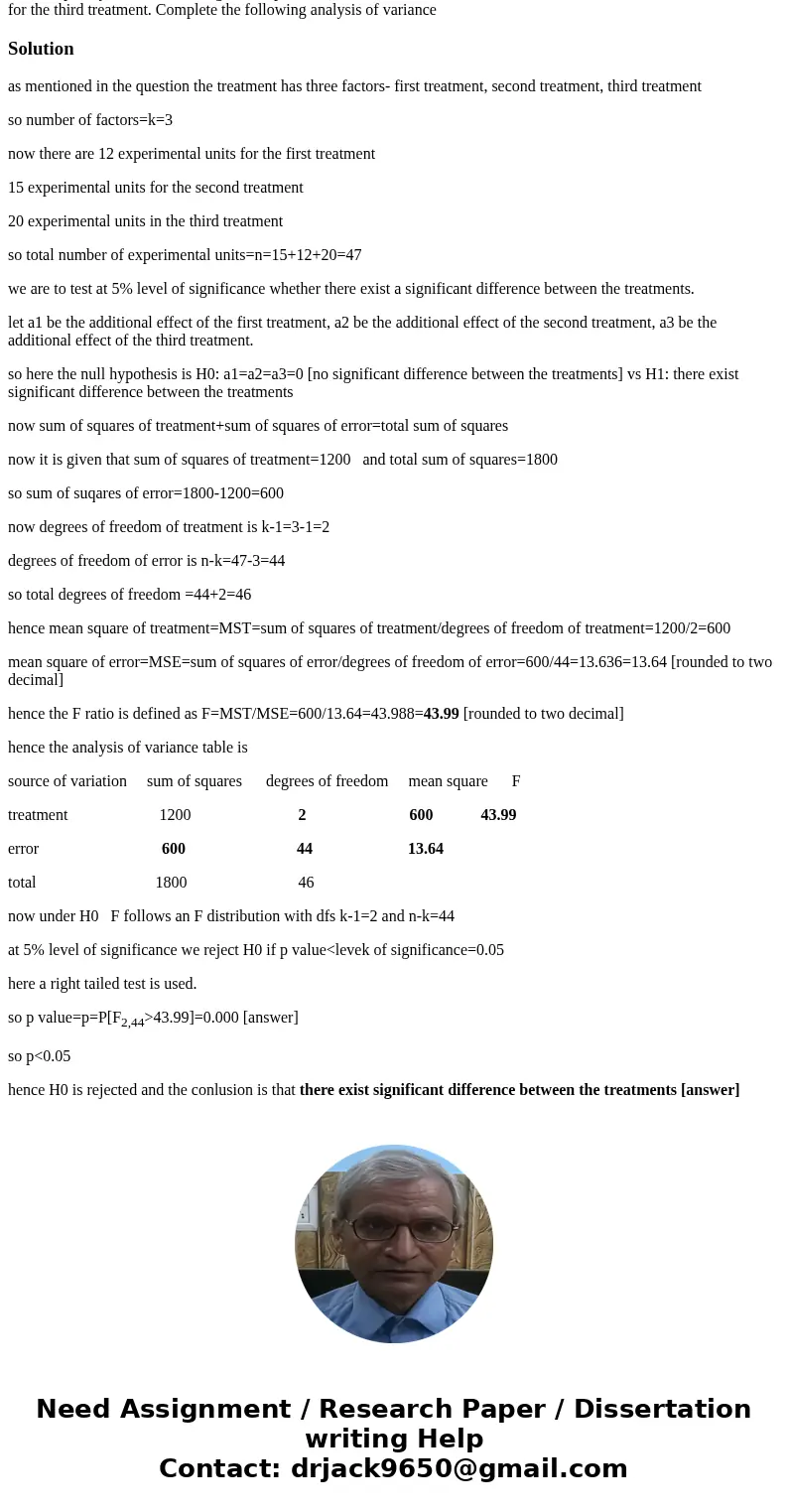In a completely randomized design 12 experimental units were
Solution
as mentioned in the question the treatment has three factors- first treatment, second treatment, third treatment
so number of factors=k=3
now there are 12 experimental units for the first treatment
15 experimental units for the second treatment
20 experimental units in the third treatment
so total number of experimental units=n=15+12+20=47
we are to test at 5% level of significance whether there exist a significant difference between the treatments.
let a1 be the additional effect of the first treatment, a2 be the additional effect of the second treatment, a3 be the additional effect of the third treatment.
so here the null hypothesis is H0: a1=a2=a3=0 [no significant difference between the treatments] vs H1: there exist significant difference between the treatments
now sum of squares of treatment+sum of squares of error=total sum of squares
now it is given that sum of squares of treatment=1200 and total sum of squares=1800
so sum of suqares of error=1800-1200=600
now degrees of freedom of treatment is k-1=3-1=2
degrees of freedom of error is n-k=47-3=44
so total degrees of freedom =44+2=46
hence mean square of treatment=MST=sum of squares of treatment/degrees of freedom of treatment=1200/2=600
mean square of error=MSE=sum of squares of error/degrees of freedom of error=600/44=13.636=13.64 [rounded to two decimal]
hence the F ratio is defined as F=MST/MSE=600/13.64=43.988=43.99 [rounded to two decimal]
hence the analysis of variance table is
source of variation sum of squares degrees of freedom mean square F
treatment 1200 2 600 43.99
error 600 44 13.64
total 1800 46
now under H0 F follows an F distribution with dfs k-1=2 and n-k=44
at 5% level of significance we reject H0 if p value<levek of significance=0.05
here a right tailed test is used.
so p value=p=P[F2,44>43.99]=0.000 [answer]
so p<0.05
hence H0 is rejected and the conlusion is that there exist significant difference between the treatments [answer]


 Homework Sourse
Homework Sourse